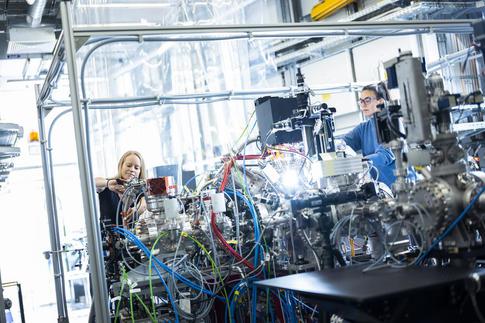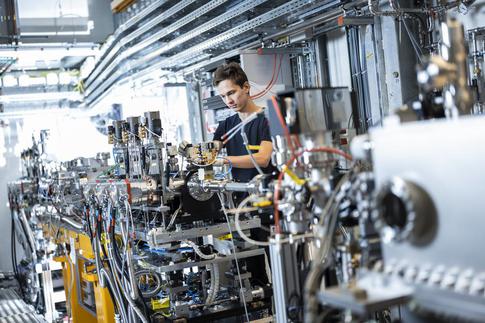XFEL: Two more instruments start user operation
Two more instruments start user operation
Two additional experiment stations—or instruments—have now started operation at European XFEL. The instruments for Small Quantum Systems (SQS) and Spectroscopy and Coherent Scattering (SCS) welcomed their first user groups for experiments last week and this week respectively. With the successful start of operation of the new instruments, European XFEL has now doubled its capacity to conduct research. With the first three groups coming to the new instruments in 2018, the total number of users who will have visited the facility in 2018 will reach over 500.

Scientists at the SQS instrument. Copyright European XFEL / Jan Hosan
The two already operational instruments, SPB/SFX and FXE, have been used to examine biomolecules or biological processes and ultrafast reactions respectively since September 2017. In the future, two of the four now operational instruments will be run in parallel in twelve hour shifts. Two more instruments are scheduled to start user operation in the first half of 2019.
“This important milestone gives even more researchers a chance to use the unique properties of our X-ray laser” says Prof. Serguei Molodtsov, Scientific Director at European XFEL. “We made a commitment to the scientific community that the two instruments SCS and SQS would be ready for operation by the end of the year. I am very pleased that we achieved this ambitious goal within time and budget. This has been made possible by the tremendous dedication of our staff and our colleagues from DESY, who operate the European XFEL’s accelerator. We now look forward to seeing the results that scientists from all over the world will achieve with the new instruments!”

The SCS instrument at European XFEL. Copyright European XFEL / Jan Hosan
Both new instruments use so-called soft X-rays, which have a longer wavelength than hard X-rays.
The SQS instrument is designed to study fundamental processes such as what happens when atoms or small molecules absorb many photons simultaneously as well as examining how and when molecular bonds break. SQS can also be used to investigate nanoparticles and biomolecules. The first experiment at SQS involved scientists from several institutes, who were interested in multi-photon processes triggered by the intense X-ray flashes of the European XFEL.
The SCS instrument is designed to help scientists unravel the electronic and structural properties of a range of materials, including understanding what kind of nanoscale changes happen in magnetic and superconducting materials, and observing what happens during chemical reactions in real-time. The first experiment at the instrument also included scientists from many different institutes and was designed to explore how solid state samples respond to intense X-ray pulses and react under the high pulse rate of the X-ray beam.
